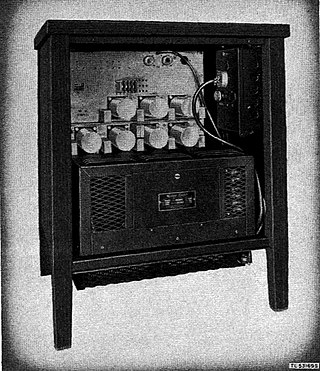
A computer worm is a standalone malware computer program that replicates itself in order to spread to other computers. It often uses a computer network to spread itself, relying on security failures on the target computer to access it. It will use this machine as a host to scan and infect other computers. When these new worm-invaded computers are controlled, the worm will continue to scan and infect other computers using these computers as hosts, and this behaviour will continue. Computer worms use recursive methods to copy themselves without host programs and distribute themselves based on exploiting the advantages of exponential growth, thus controlling and infecting more and more computers in a short time. Worms almost always cause at least some harm to the network, even if only by consuming bandwidth, whereas viruses almost always corrupt or modify files on a targeted computer.
Malware is any software intentionally designed to cause disruption to a computer, server, client, or computer network, leak private information, gain unauthorized access to information or systems, deprive access to information, or which unknowingly interferes with the user's computer security and privacy. Researchers tend to classify malware into one or more sub-types.

Steganography is the practice of representing information within another message or physical object, in such a manner that the presence of the information is not evident to human inspection. In computing/electronic contexts, a computer file, message, image, or video is concealed within another file, message, image, or video. The word steganography comes from Greek steganographia, which combines the words steganós, meaning "covered or concealed", and -graphia meaning "writing".

TEMPEST is a U.S. National Security Agency specification and a NATO certification referring to spying on information systems through leaking emanations, including unintentional radio or electrical signals, sounds, and vibrations. TEMPEST covers both methods to spy upon others and how to shield equipment against such spying. The protection efforts are also known as emission security (EMSEC), which is a subset of communications security (COMSEC).

Shlomi Dolev is a Rita Altura Trust Chair Professor in Computer Science at Ben-Gurion University of the Negev (BGU) and the head of the BGU Negev Hi-Tech Faculty Startup Accelerator.
An air gap, air wall, air gapping or disconnected network is a network security measure employed on one or more computers to ensure that a secure computer network is physically isolated from unsecured networks, such as the public Internet or an unsecured local area network. It means a computer or network has no network interface controllers connected to other networks, with a physical or conceptual air gap, analogous to the air gap used in plumbing to maintain water quality.
Data loss prevention (DLP) software detects potential data breaches/data exfiltration transmissions and prevents them by monitoring, detecting and blocking sensitive data while in use, in motion, and at rest.
In statistics and machine learning, ensemble methods use multiple learning algorithms to obtain better predictive performance than could be obtained from any of the constituent learning algorithms alone. Unlike a statistical ensemble in statistical mechanics, which is usually infinite, a machine learning ensemble consists of only a concrete finite set of alternative models, but typically allows for much more flexible structure to exist among those alternatives.
Security information and event management (SIEM) is a field within the field of computer security, where software products and services combine security information management (SIM) and security event management (SEM). They provide real-time analysis of security alerts generated by applications and network hardware. Vendors sell SIEM as software, as appliances, or as managed services; these products are also used to log security data and generate reports for compliance purposes. The term and the initialism SIEM was coined by Mark Nicolett and Amrit Williams of Gartner in 2005.
Mobile security, or mobile device security, is the protection of smartphones, tablets, and laptops from threats associated with wireless computing. It has become increasingly important in mobile computing. The security of personal and business information now stored on smartphones is of particular concern.
Domain generation algorithms (DGA) are algorithms seen in various families of malware that are used to periodically generate a large number of domain names that can be used as rendezvous points with their command and control servers. The large number of potential rendezvous points makes it difficult for law enforcement to effectively shut down botnets, since infected computers will attempt to contact some of these domain names every day to receive updates or commands. The use of public-key cryptography in malware code makes it unfeasible for law enforcement and other actors to mimic commands from the malware controllers as some worms will automatically reject any updates not signed by the malware controllers.

William Johnston BuchananOBE FBCS CEng PFHEA is a Scottish computer scientist. Buchanan is a professor in the School of Computing, Engineering and the Built Environment. He currently leads the Blockpass ID Lab and the Centre for Cybersecurity, IoT and Cyberphysical at Edinburgh Napier University. In 2017, he was appointed Officer of the Order of the British Empire (OBE) in the 2017 Birthday Honours for services to cyber security.
Air-gap malware is malware that is designed to defeat the air-gap isolation of secure computer systems using various air-gap covert channels.
The following outline is provided as an overview of and topical guide to computer security:
Adversarial machine learning is the study of the attacks on machine learning algorithms, and of the defenses against such attacks. A survey from May 2020 exposes the fact that practitioners report a dire need for better protecting machine learning systems in industrial applications.

Yaniv Altshuler, is an Israeli computer scientist and entrepreneur. He is a researcher at the MIT Media Lab, at the Human Dynamics group headed by professor Alex Pentland.
Local differential privacy (LDP) is a model of differential privacy with the added requirement that if an adversary has access to the personal responses of an individual in the database, that adversary will still be unable to learn much of the user's personal data. This is contrasted with global differential privacy, a model of differential privacy that incorporates a central aggregator with access to the raw data.
Internet security awareness or Cyber security awareness refers to how much end-users know about the cyber security threats their networks face, the risks they introduce and mitigating security best practices to guide their behavior. End users are considered the weakest link and the primary vulnerability within a network. Since end-users are a major vulnerability, technical means to improve security are not enough. Organizations could also seek to reduce the risk of the human element. This could be accomplished by providing security best practice guidance for end users' awareness of cyber security. Employees could be taught about common threats and how to avoid or mitigate them.
Ali Dehghantanha is an academic-entrepreneur in cybersecurity and cyber threat intelligence. He is a Professor of Cybersecurity and a Canada Research Chair in Cybersecurity and Threat Intelligence.
In computer science, a code property graph (CPG) is a computer program representation that captures syntactic structure, control flow, and data dependencies in a property graph. The concept was originally introduced to identify security vulnerabilities in C and C++ system code, but has since been employed to analyze web applications, cloud deployments, and smart contracts. Beyond vulnerability discovery, code property graphs find applications in code clone detection, attack-surface detection, exploit generation, measuring code testability, and backporting of security patches.






